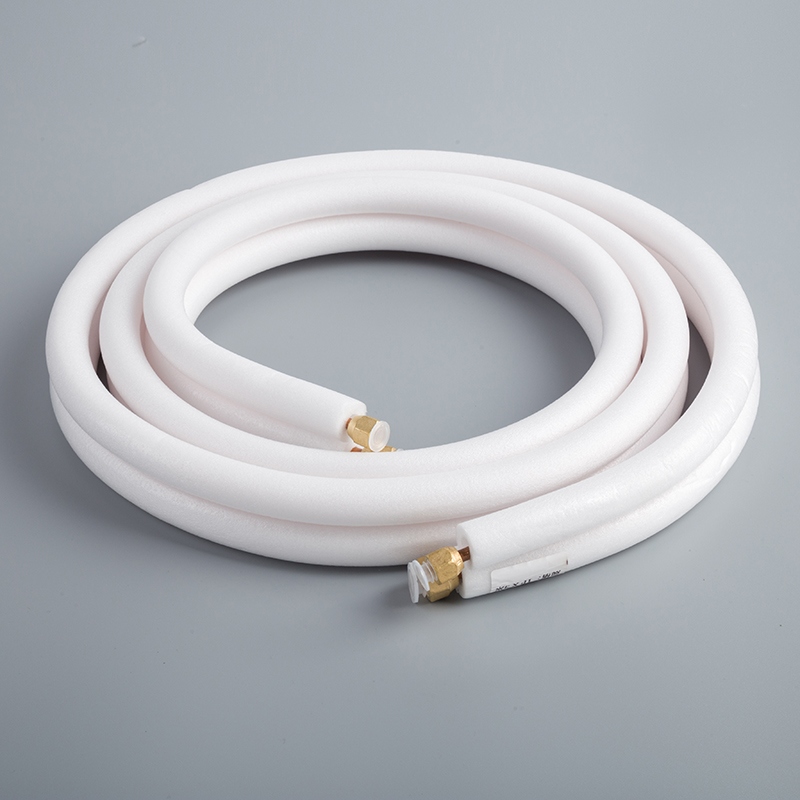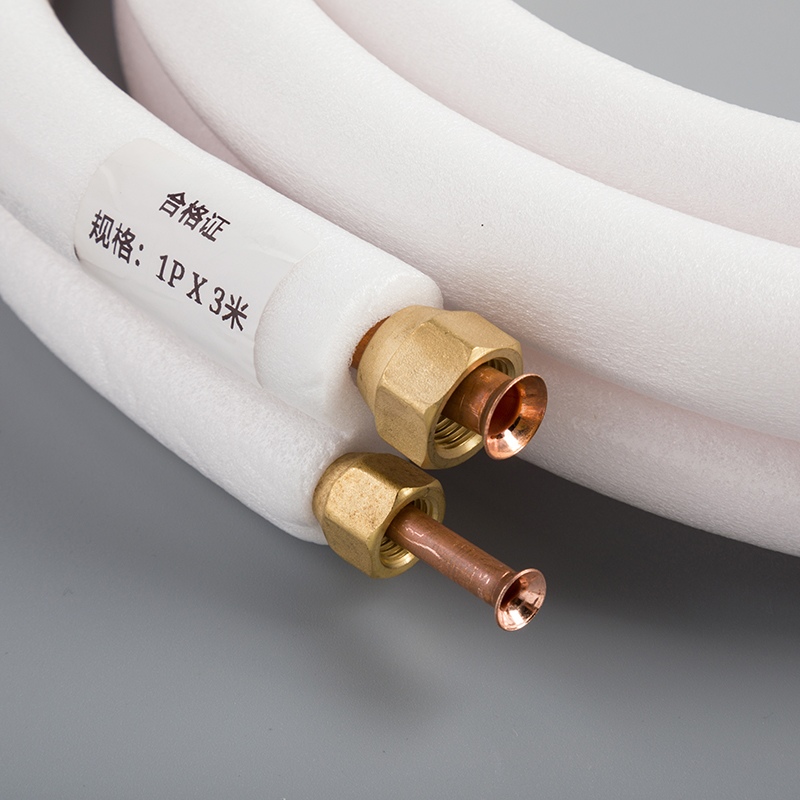Top 5 Reasons to Insulate Your Copper Pipes

Insulate copper pipes is a crucial step in enhancing energy efficiency and protecting your plumbing system. By adding insulation to these pipes, you can significantly reduce heat loss, prevent freezing, and improve overall performance. The benefits of insulating copper pipes go beyond just saving money on energy bills; it ensures that your water stays at the desired temperature throughout its journey. With the guidance of experts in pipe insulation like Neo Thermal Insulation and Hayes Plumbing, you can rest assured that your investment will lead to long-term savings and peace of mind.
Save Money on Energy Bills

To insulate copper pipes is to invest in long-term savings. By reducing heat loss through proper insulation, homeowners can see a significant decrease in energy consumption. The average savings amount to $3.74 per linear foot of pipe annually, making it a cost-effective solution for budget-conscious individuals. Additionally, insulated pipes improve household energy efficiency by maintaining consistent water temperatures throughout the plumbing system. This not only saves money but also ensures a more comfortable living environment.
Reflective insulation, like radiant barrier insulation, plays a crucial role in enhancing energy efficiency. By reflecting heat back into the pipes, this type of insulation further reduces heat loss and improves overall performance. With superior energy efficiency when properly installed, reflective insulation is a smart choice for those looking to cut down on energy expenses while maximizing the benefits of insulating their copper pipes.
Protect Against Environmental Damage
Insulating copper pipes not only saves money but also protects against environmental damage. Extreme temperatures can wreak havoc on unprotected pipes, leading to freezing and potential heat damage. Prevent freezing by insulating your copper pipes, ensuring they remain functional even in the coldest weather. Additionally, insulation helps avoid heat damage by maintaining a stable temperature within the pipes, preventing overheating and potential structural issues.
Condensation buildup is another environmental challenge that insulated pipes can effectively combat. By insulating your copper pipes, you can prevent moisture accumulation, reducing the risk of water-related damages in your plumbing system. Moreover, insulation helps avoid water damage by creating a barrier that shields the pipes from external moisture, preserving their integrity over time.
Improve Thermal Efficiency
To insulate copper pipes is to enhance thermal efficiency within your plumbing system. By limiting heat transfer through proper insulation, you can maintain water temperature and improve overall comfort in your home. The insulation acts as a barrier that prevents moisture penetration, ensuring improved home efficiency and reduced energy consumption.
Insulated pipes are compared to non-insulated pipes in terms of their impact on thermal dynamics and energy efficiency. The key differences lie in the ability of insulated pipes to reduce heat loss and gain, leading to cost savings and energy efficiency. Additionally, insulated pipes protect against freezing, burst pipes, and help maintain desired temperatures throughout the plumbing system.
Proper insulation materials play a crucial role in controlling thermal dynamics and enhancing energy efficiency. Insulated pipes not only improve household energy efficiency but also prevent freezing issues and burst pipes. They are essential for ensuring pipeline integrity and reducing heat loss effectively.
Insulating your copper pipes is a proactive step towards improving thermal efficiency, reducing energy consumption, and maintaining optimal comfort levels in your home.
Control Condensation

Prevent Standing Water
Avoid Freezing Issues
Insulating copper pipes is a preventive measure against freezing-induced damage. By maintaining internal temperatures, the risk of freezing and potential water damage is significantly reduced. The insulation acts as a protective barrier that shields the pipes from extreme cold, ensuring operational efficiency even in harsh winter conditions.
Reduce Mold Risk
Insulated pipes play a crucial role in preventing condensation-related issues such as mold growth. Condensation can lead to rust and mold growth, posing risks to both the pipes and surrounding areas. By reducing the risk of condensation through proper insulation, the integrity of the pipes is preserved, ultimately protecting against potential health hazards.
Enhance Pipe Longevity
Reduce Corrosion
Insulation helps in reducing corrosion on copper pipes by creating a barrier that shields them from external elements. Corrosion can weaken the pipes over time, leading to leaks and structural issues. By insulating the pipes, you can effectively prevent corrosion, ensuring their longevity and optimal performance for years to come.
Extend Pipe Life
Properly insulated pipes have an extended lifespan compared to uninsulated ones. The insulation protects the pipes from environmental factors that could cause deterioration or damage. By investing in pipe insulation, you are not only safeguarding your plumbing system but also ensuring that your pipes have a prolonged life span, saving you time and money on repairs in the long run.
Conserve Water
Quicker Access to Hot Water
Reflective Insulation is a valuable solution for achieving quicker access to hot water. By using multiple layers of foil and other materials, reflective insulation effectively reflects heat back into the pipes, ensuring that hot water reaches faucets promptly. This innovative insulation method not only saves time but also reduces energy waste by maintaining optimal water temperatures throughout the plumbing system.
Save Time
Installing reflective insulation on copper pipes can save homeowners valuable time. With improved thermal efficiency, hot water travels swiftly from the heater to the desired outlets, eliminating unnecessary waiting periods. This time-saving feature enhances daily routines and ensures a seamless flow of hot water for various household activities.
Reduce Water Waste
The use of reflective insulation on copper pipes contributes to reducing water waste significantly. By providing quick access to hot water, this insulation method minimizes the need to run taps or showers for extended periods, ultimately conserving precious water resources. Additionally, by maintaining consistent water temperatures, reflective insulation helps prevent excess water usage due to temperature adjustments.
Lower Water Temperature Settings
Proper pipe insulation materials enable homeowners to lower water temperature settings without compromising comfort. By controlling thermal dynamics effectively, these materials help maintain desired temperatures within the plumbing system while reducing energy consumption.
Energy Savings
Utilizing pipe insulation materials results in substantial energy savings for households. By preventing heat loss or gain in pipes, this insulation method promotes energy conservation and reduces utility costs over time. Lowering water temperature settings through efficient pipe insulation further enhances these savings by optimizing energy efficiency within the plumbing system.
Enhanced Comfort
Enhanced comfort is a key benefit of utilizing pipe insulation materials on copper pipes. By ensuring consistent water temperatures and quick access to hot water, this insulation method creates a comfortable living environment for residents. The ability to adjust water temperature settings while maintaining efficiency adds an extra layer of comfort and convenience to daily activities.
Insulating copper pipes offers a multitude of benefits that extend beyond immediate cost savings. By reducing heat loss, preventing freezing, and improving efficiency, homeowners can protect their plumbing system from environmental damage. The long-term advantages of insulating pipes include enhanced safety, energy conservation, and prevention of heat-related issues. Canadian homeowners in regions like Oshawa are familiar with the risks posed by harsh winter conditions, making pipe insulation a crucial preventive measure. With expert guidance from trusted companies like Hayes Plumbing and Neo Thermal Insulation, insulating your copper pipes ensures both structural integrity and peace of mind.
See Also
Key Tips for Effective 1/4 Copper Pipe Fitting Usage
Advantages of 1/4 3/8 Dual Copper Pipe Coils and Insulation
Maximize AC Efficiency with Copper Pipe Insulation Tricks


